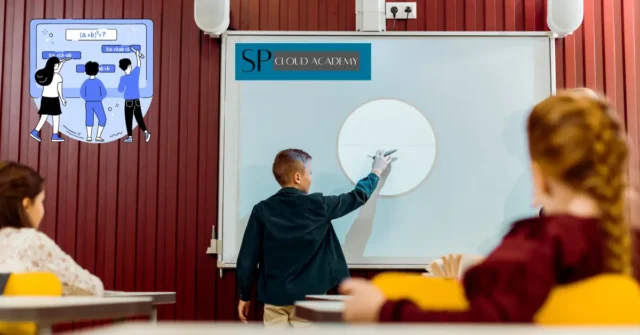In today’s digital landscape, having a static website is no longer sufficient for schools. An interactive website is essential for engaging students, parents, and the community, facilitating communication, and enhancing the overall educational experience. Here are several compelling reasons why schools need interactive websites and how they can benefit the educational ecosystem.

1. Enhanced Engagement for Students
Interactive websites create an engaging environment that captivates students’ attention and encourages active participation.
Benefits:
- Multimedia Content: Integrating videos, animations, and interactive quizzes can make learning more appealing. Students are more likely to retain information when it is presented in a dynamic format.
- Gamification: Incorporating game-like elements, such as badges or leaderboards, can motivate students to complete assignments and participate in school activities.
2. Improved Communication
A well-designed interactive website facilitates communication between students, parents, and teachers.
Features to Include:
- Forums and Discussion Boards: Allowing students and parents to interact can foster a sense of community and provide a platform for sharing ideas and feedback.
- Live Chat Options: Implementing chat features enables immediate communication, allowing parents to connect with teachers or administrators easily.
3. Accessible Information
An interactive website provides a centralized hub for all necessary information, ensuring that it is easily accessible to everyone involved in the school community.
Key Information Areas:
- Event Calendars: Schools can keep parents and students informed about upcoming events, deadlines, and activities in real time.
- Resource Libraries: Interactive resources, such as downloadable materials and links to online tools, can support both students and parents in the learning process.
4. Promoting School Programs and Events
Interactive websites serve as a platform for promoting school programs, events, and achievements, helping to foster a sense of pride within the community.
Strategies:
- Spotlight Sections: Featuring student achievements, teacher highlights, or recent events can showcase the school’s strengths and build a positive reputation.
- Interactive Galleries: Sharing photos and videos from school events can engage parents and encourage participation in future activities.
5. Support for Diverse Learning Styles
Interactive websites can cater to various learning styles by offering multiple ways to consume content.
Inclusive Design:
- Visual Learners: Incorporating videos and infographics can enhance understanding for visual learners.
- Kinesthetic Learners: Interactive simulations and activities allow hands-on learners to engage with the material actively.
6. Efficient Administration and Operations
An interactive website can streamline administrative processes, saving time and resources for school staff.
Operational Benefits:
- Online Forms and Registrations: Allowing parents to complete forms and registrations online can simplify administrative tasks and reduce paper waste.
- Automated Updates: Keeping the website updated with the latest information can reduce the need for manual communication and ensure everyone is on the same page.
7. Increased Parental Involvement
An interactive website encourages parental involvement in their children’s education by providing them with resources and information.
Engagement Opportunities:
- Parent Portals: Secure access to grades, attendance, and assignments can empower parents to take an active role in their child’s education.
- Volunteer Opportunities: Highlighting ways for parents to get involved in school activities fosters a sense of community and collaboration.
8. Showcasing School Culture and Values
An interactive website serves as a reflection of a school’s culture and values, helping attract prospective students and families.
Branding Strategies:
- Virtual Tours: Offering virtual tours of the campus can provide an immersive experience for prospective families considering enrollment.
- Values and Mission Statements: Clearly communicating the school’s mission and values through interactive storytelling can resonate with families looking for a good fit.
9. Facilitating Online Learning
With the rise of hybrid and online learning, interactive websites are essential for supporting educational delivery.
Key Features:
- Learning Management Systems (LMS): Integrating an LMS can streamline course management, assignment submissions, and student tracking.
- Online Resources and Tutorials: Providing access to additional learning materials and tutorials helps students continue their education outside the classroom.
10. Building a Stronger Community
An interactive website can strengthen the relationship between the school and the surrounding community by highlighting partnerships and initiatives.
Community Engagement:
- Collaborative Projects: Featuring collaborative projects with local organizations can foster a sense of unity and demonstrate the school’s commitment to community involvement.
- Event Announcements: Promoting community events on the school website can encourage participation and collaboration.
Conclusion
In the digital age, interactive websites are no longer a luxury but a necessity for schools. They enhance engagement, improve communication, and support diverse learning styles, ultimately enriching the educational experience for students, parents, and staff alike. By investing in an interactive website, schools can foster a dynamic and inclusive environment that promotes learning, collaboration, and community involvement, preparing students for success in an increasingly digital world.


No responses yet